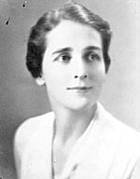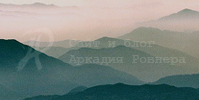Kathryn Hulme

Kathryn Hulme (1900–1981), author of The Nun’s Story, The Wild Place and Undiscovered Country (a description of her years with Gurdjieff). A woman of boundless energy (she worked as a welder in a ship-building factory during World War II), she was also an astute and perceptive observer of life around her.
After several years working with Displaced Persons after World War II, she and her companion, a former nun named Marie-Louise Habets (the subject of The Nun’s Story) moved to the United States, living in Connecticut, southern California, and finally on the Hawaiian island of Kauai, where Hulme died in 1981. [Photo—from the jacket of the original Atlantic-Little Brown edition, by Senda of Kauai].
Kathryn Hulme was part of a Gurdjieff group known as “The Rope.” This extraordinary group of women included Jane Heap and Margaret Anderson, editors of The Little Review, who were the first publishers of James Joyce’s Ulysses, for which they nearly ended up serving time. Also included were Solita Solano, writer, editor, and partner of Janet Flanner, who wrote the “American in Paris” column in the New Yorker for many years, and the wildly exotic French singer, Georgette LeBlanc. Gurdjieff spent much time and attention on this group of women, and their writings on their experiences with Gurdjieff form a significant contribution to the Gurdjieff literature.
Quotations from Hulme
“I believe that anyone who has struggled to shut off the mechanically racing mind through a sleepless night, or who has tried to pray for even half a minute without having associations drag one’s attention away, has had a taste, however small, of the kind of self-discipline into which he initiated us. It was a basic “spiritual exercise aimed to help us build inner energy.”
“Gurdjieff had given us a pledge to say each time before beginning the new exercise that we would not use this for the self, but for all humanity. This “good wishing-for-all vow, so deeply moving in intent, had a tremendous effect upon me. For the first time in my life, I felt that I was truly doing something for humanity as I strove to make my own molecule of it more perfect. The meaning of this Work, which at first had seemed quite egotistical and self-centered, suddenly blossomed out like a tree of life encompassing in its myriad branchings the entire human family. The implications of it were staggering. By my single efforts toward Being, I could help sleeping humanity one hairsbreadth nearer to God. I believed this.”






